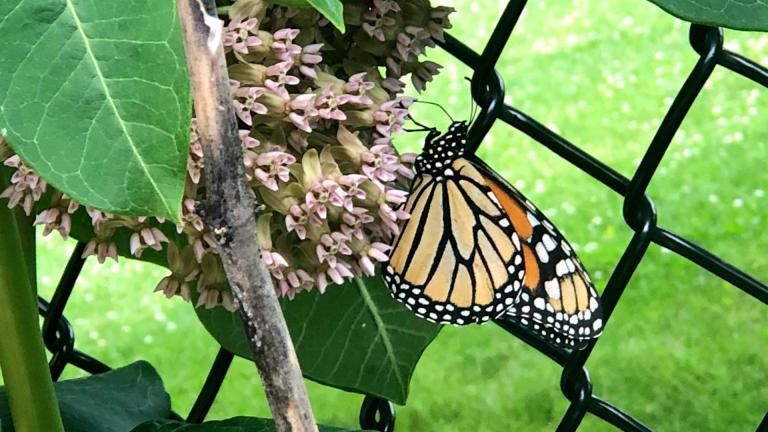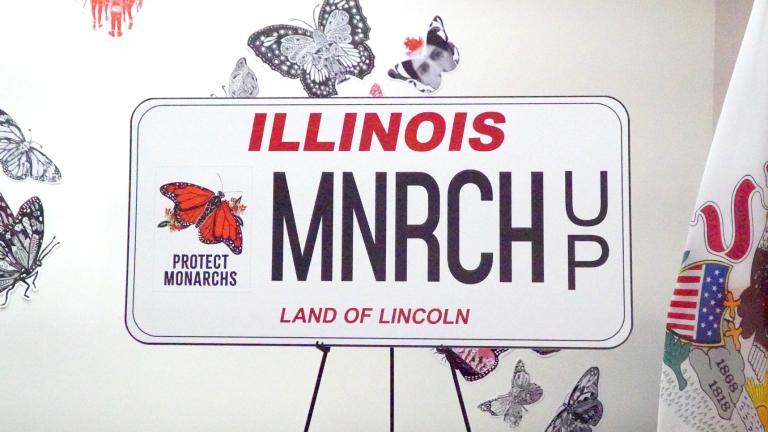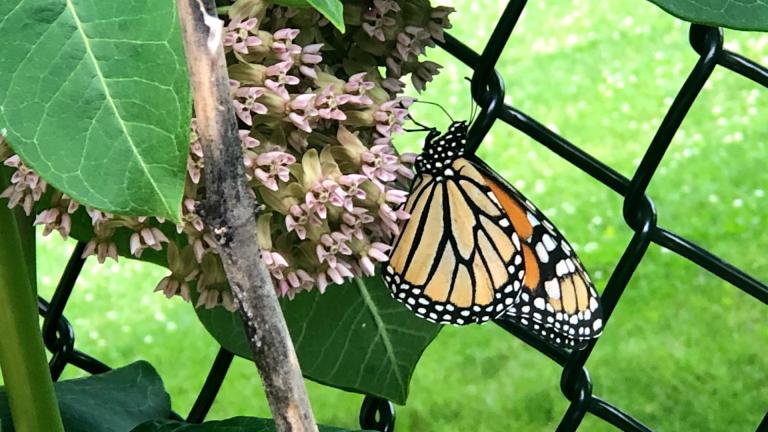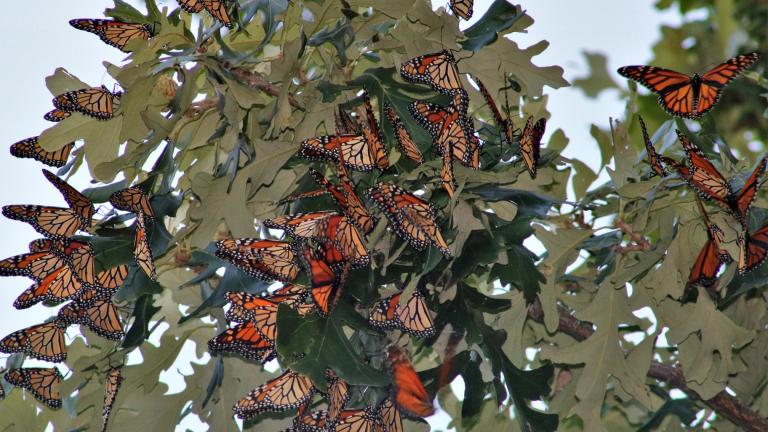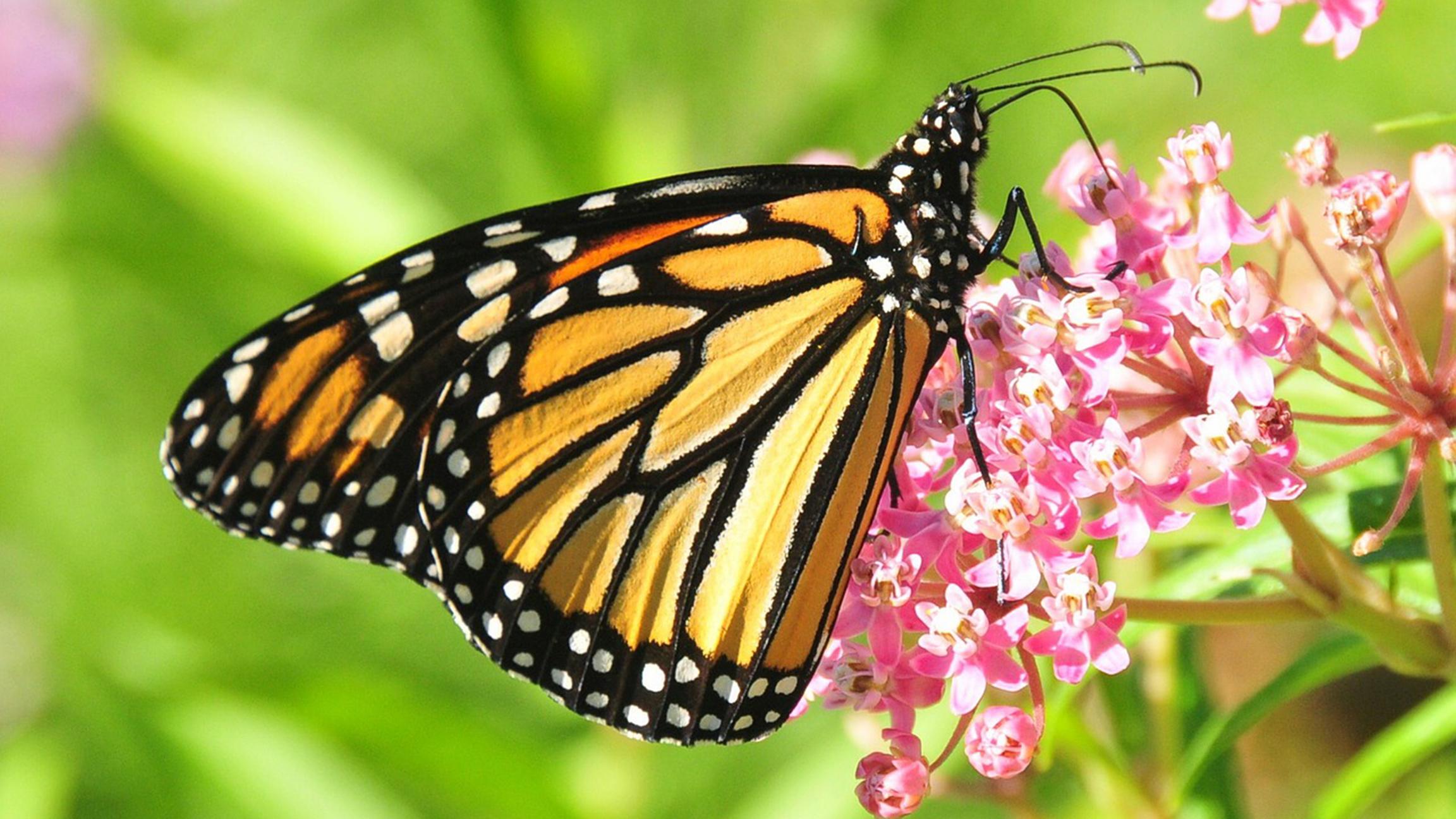 (skeeze / Pixabay)
(skeeze / Pixabay)
Conservationists and monarch butterfly enthusiasts have undertaken a number of efforts to save the troubled species, whose populations have plummeted by more than 80 percent over the past two decades.
One technique has been to breed monarchs in captivity and then release them into the wild throughout summer and fall, in time for them to join other monarchs on their annual migration to warmer climates.
But a new study conducted by University of Chicago scientists has identified a major problem with this approach. In the study, monarch butterflies bred in captivity and obtained from a commercial breeder did not fly in a southward direction once released, meaning they have likely lost their ability to migrate.
The study, published last month in the journal Proceedings of the National Academy of Sciences, shows that despite the positive intentions of conservationists who promote captive breeding for monarchs, the practice may not be producing the desired effect.
“We hope this will be an avenue into understanding how monarchs are losing migration,” said Marcus Kronforst, associate professor of ecology and evolution at UChicago and the study’s senior author, in a statement. “These monarchs have been brought into captivity and prevented from migrating for many generations, and they have genetically lost migration. It’s a microcosm for what’s happening naturally.”
Experts say monarchs are at risk of becoming extinct within 20 years as they continue to suffer from habitat loss, unintentional exposure to insecticides and herbicides and factors related to climate change. The U.S. Fish and Wildlife Service is considering whether to list North American monarchs as a threatened species under the Endangered Species Act, a move that could help future conservation efforts.
In studying the captive breeding of monarchs, Kronforst and Ph.D. student Ayse Tenger-Trolander obtained several adult monarch butterflies from a commercial breeder and placed them in an outdoor garden atop a building on UChicago’s campus. The monarchs were enclosed in mesh cages but still exposed to natural light, temperature and moisture.
The researchers then collected eggs from the butterflies they had originally obtained and raised the new monarchs until they reached maturity. At that point, the butterflies were placed in an open-ended metal cylinder that served as a de facto flight simulator, with each butterfly connected to a rod near the top of the cylinder by a metal pin or tether attached to its abdomen.
 The study’s “flight simulator,” in which monarch butterflies were tethered and a computer monitored their direction of flight. (Courtesy Tenger-Trolander et al. / University of Chicago)
The study’s “flight simulator,” in which monarch butterflies were tethered and a computer monitored their direction of flight. (Courtesy Tenger-Trolander et al. / University of Chicago)
This setup made the butterflies fly in place inside the cylinder, with a rotating dial recording the direction of each monarch every two milliseconds.
What Kronforst and Tenger-Trolander found was remarkable: Butterflies from a control group of monarchs that were not raised in captivity flew predominantly south inside the “flight simulator,” exhibiting the migratory behavior expected from monarchs. But the generation of butterflies bred from the commercially obtained monarchs did not fly in one particular direction.
Although some individual butterflies flew in a southward direction, as a group the monarchs did not fly in that direction, proof that their migratory behavior had in effect been broken.
Upon further research, the scientists found that commercially bred monarchs are genetically different enough from other monarchs to count as their own distinct population. The genetic alteration is likely responsible for the butterflies’ inability to navigate, they found.
“We can’t point to a single genetic change that did it because there are lots of them,” Kronforst said in a statment. “But we think somewhere buried in the genome are changes that have broken it.”
The study demonstrates that the migratory behaviors of the iconic black-and-orange butterflies is fragile and can be influenced by the way monarchs are bred.
“It looks like buying monarchs to raise and release doesn’t contribute to the migratory population, and raising them indoors probably isn’t helpful either,” Kronforst said in a statement. “If you want to grow milkweed in your garden and raise monarchs you find around your house, just don’t take them inside. If you keep them outdoors, they should be totally fine.”
Contact Alex Ruppenthal: @arupp | (773) 509-5623 | [email protected]
Related stories:
Cities Can Play Key Role in Saving Monarch Butterflies, Studies Find
UIC Leads National Initiative to Help Struggling Monarch Butterflies
100-Plus Groups Urge Feds for More Funding to Save Monarch Butterflies
Illinois Lawmakers Pass Bill to Protect Monarch Butterfly Habitat
In Pilsen, Monarch Butterflies a Source of Joy and Education

